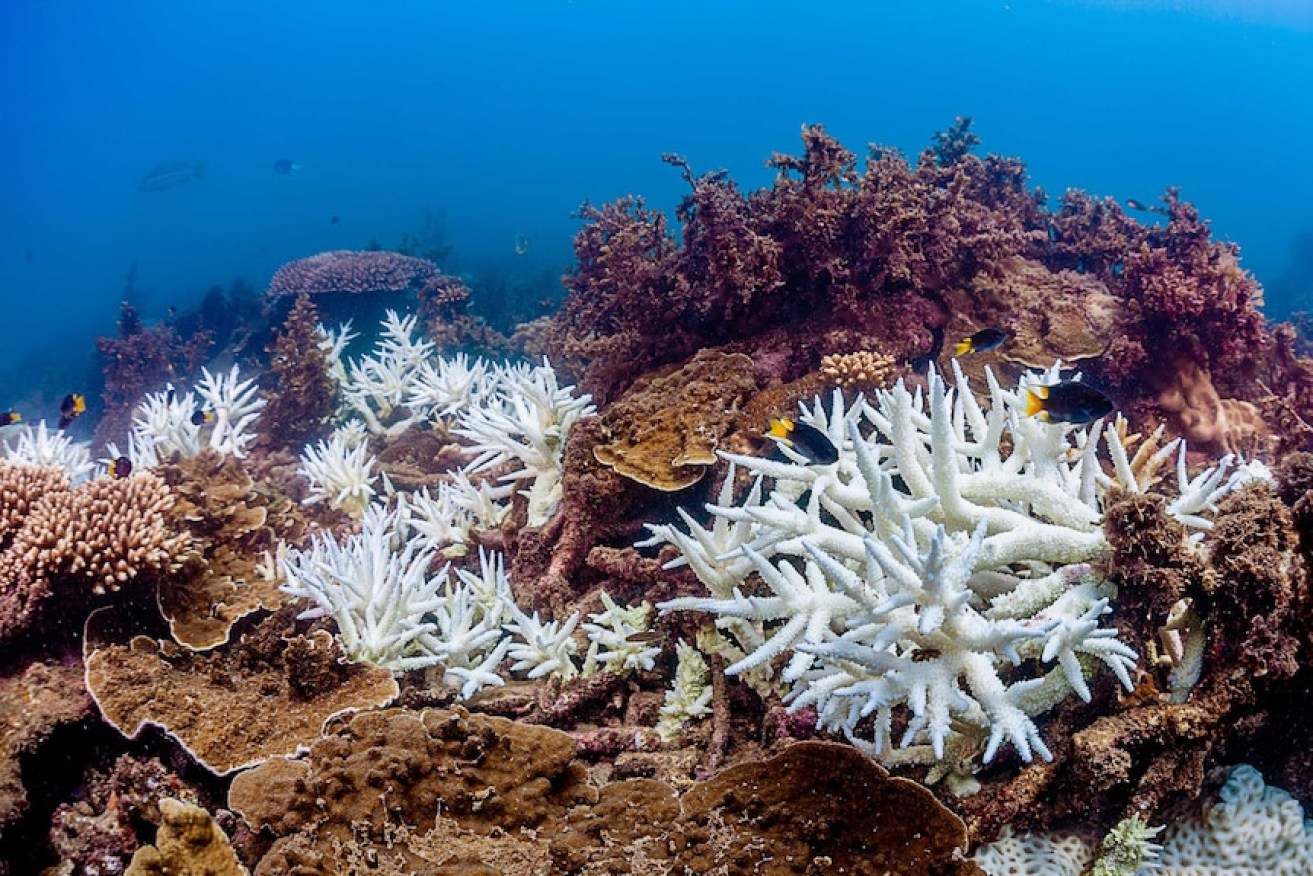Reef a ‘checkerboard’ of death and hope – only 2 per cent unscathed
Only 2 per cent of the Great Barrier Reef has escaped unscathed in the last five bouts of mass coral bleaching, with scientists now predicting increasingly rapid-fire marine heatwaves could put even more coral at risk.


Coral bleaching near Magnetic Island, after a bleaching event in 2020.(Supplied: Victor Huertas/ABC)
Dual papers on the precarious state of the Great Barrier Reef published today by Queensland universities show the reef’s capacity to recover has dropped by as much as 70 per cent.
And scientists are now looking to flip rescue efforts by finding cool coral refuges off the Queensland coast that may be able to supply larvae and spawn an off-season revival of the reef before the next devastating event.
The studies have exposed the extent to which five bouts of mass bleaching since 1998 have ravaged the reef, with the last three deadly bleach events hitting within the past five years.
Professor Terry Hughes, from the Australian Research Council’s Centre of Excellence for Coral Reef Studies at James Cook University, said satellite mapping revealed the impact of mass coral mortality.
“Five bouts of mass bleaching since 1998 have turned the Great Barrier Reef into a checkerboard of reefs with very different recent histories, ranging from 2 per cent of reefs that have escaped bleaching altogether to 80 per cent that have now bleached severely at least once since 2016,” Hughes said.
“For the first time, in 2020, we saw severe bleaching across the whole length of the reef – in parts of the northern, central and especially the southern region,” he said.
Bleaching is a stress response by corals that overheat during heatwaves, where they lose their colour and often die.
The study found 80 per cent of the 2,300-kilometre Great Barrier Reef, that includes more than 3,000 individual reefs, bleached severely in 2016, 2017 and 2020. Northern reefs escaped damage in 1998 and 2002 before being smashed by bleaching in 2016. The south escaped in 2016 and 2017.
Hughes said the JCU study, published in Current Biology journal, found experiencing one bleaching event could fortify a reef to a new extreme heat stress event.
In 2002 and 2017, it took more heat to reach similar levels of bleaching to those in 1998 and 2016, he said.
Co-author Dr Mark Eakin from the American National Oceanic and Atmospheric Administration said it meant reefs hardened after exposure to marine heat waves.
“To our surprise, we found the threshold for bleaching was much higher on reefs that had experienced an earlier episode of heat stress,” Eakin said.
“Consequently, the most vulnerable reefs each year were the naïve ones that had not bleached recently.”
However, Hughes said the increasing frequency, intensity and scale of record-breaking marine heatwaves would undermine the resilience of even the most hardy of reefs.
Corals still needed time to recover before another round of heat stress so they could make babies that would disperse, settle and help depleted sections of the reef recover, he said.
A second study by the University of Queensland found the continued bleaching had a cumulative effect of disrupting vital larva supply Successive bleaching events have significantly and cumulatively disrupted connectivity of the GBR,” lead author Mandy Cheung wrote.
The study found larval supply dropped by 26 per cent after the 2016 bleaching event, then went down by 50 per cent after the 2017 bleaching and even further to 71 per cent after the most recent event in 2020.
The research team found cooler refuges where corals may fare better may provide pockets of “systemic resilience” for the Great Barrier Reef in the short term, but “source populations” and a portfolio of cool spots needed to be protected in the longer term.












